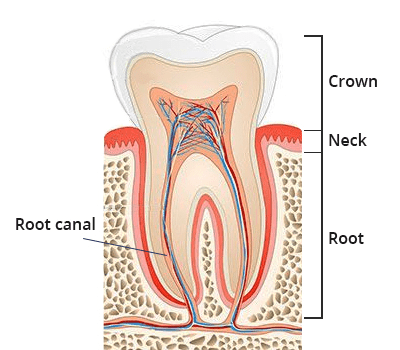Table of contents
 You may need root canal treatment if a nerve in one of your teeth becomes infected. A tooth extraction will be needed if you leave your root canal untreated. A dental bridge or a dental implant will be needed to replace the missing tooth.
You may need root canal treatment if a nerve in one of your teeth becomes infected. A tooth extraction will be needed if you leave your root canal untreated. A dental bridge or a dental implant will be needed to replace the missing tooth.
The best dentist Khabensky, DDS, works to keep your root canal cost as low as possible while reducing any root canal pain you may feel.
Basically, this therapy involves removing the nerves and pulp from inside a diseased tooth so the infection doesn’t spread throughout your body. At the same time, your family dentists Alex and Igor Khabensky, DDS of dentistry center in Brooklyn, can eliminate root canal pain. The chamber in your tooth that holds the nerves and blood supply is called the root canal. You don’t need the nerve to maintain a healthy tooth; the nerve is there to warn you of problems like infection.
A tooth infection leads to throbbing pain. The root canal pain also may be associated with:
Root canal retreatment may be needed for several different reasons, such as:
If caught early enough, infections almost always respond successfully to endodontic treatment. Your general dentist follows a similar procedure for root canal therapy and root canal retreatment:
Pain after root canal treatment usually is managed with over-the-counter pain relievers; ask your dentist for suggestions. After spending an hour or more in the chair with your mouth open, you likely will feel some discomfort. You may feel some sensitivity for about 24 hours. Any severe pain after a root canal should be reported immediately to your dentist.
When you inquire about how much a root canal costs, the answer depends on how extensive the decay is, how much it has spread and what kind of crown you choose. Retreatment may create an additional root canal cost.
However, when you save your natural tooth, the final root canal cost is difficult to measure. And with a 95 percent success rate, root canal recovery and the associated benefits are worth the investment.
After the initial root canal pain subsides, you can return to your normal oral health home care. There is a minor risk of problems that may need root canal retreatment. Possible reasons for the infection to return include:
Do you have any questions about the root canal procedure in Brooklyn? For more information or to schedule an appointment with the best dentist, Khabensky DDS of Family Cosmetic & Implants Dentistry, please contact our dental clinic.